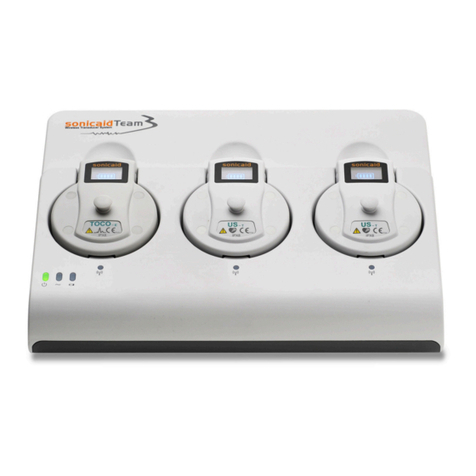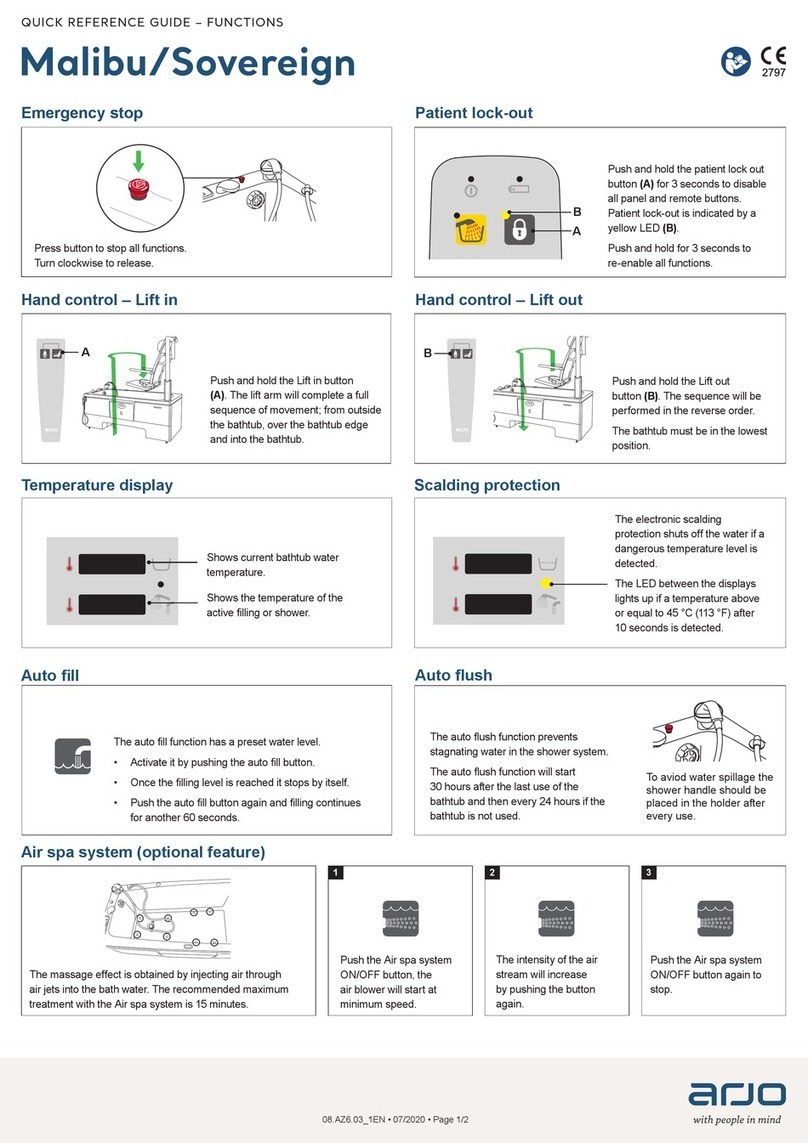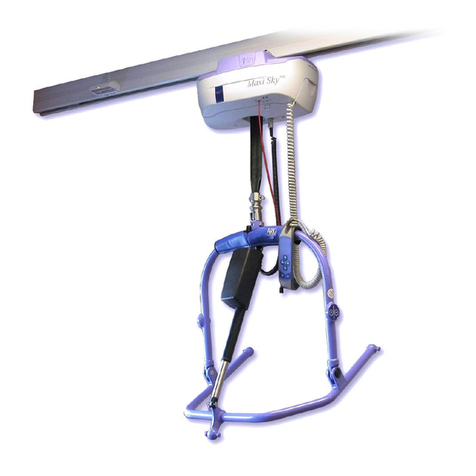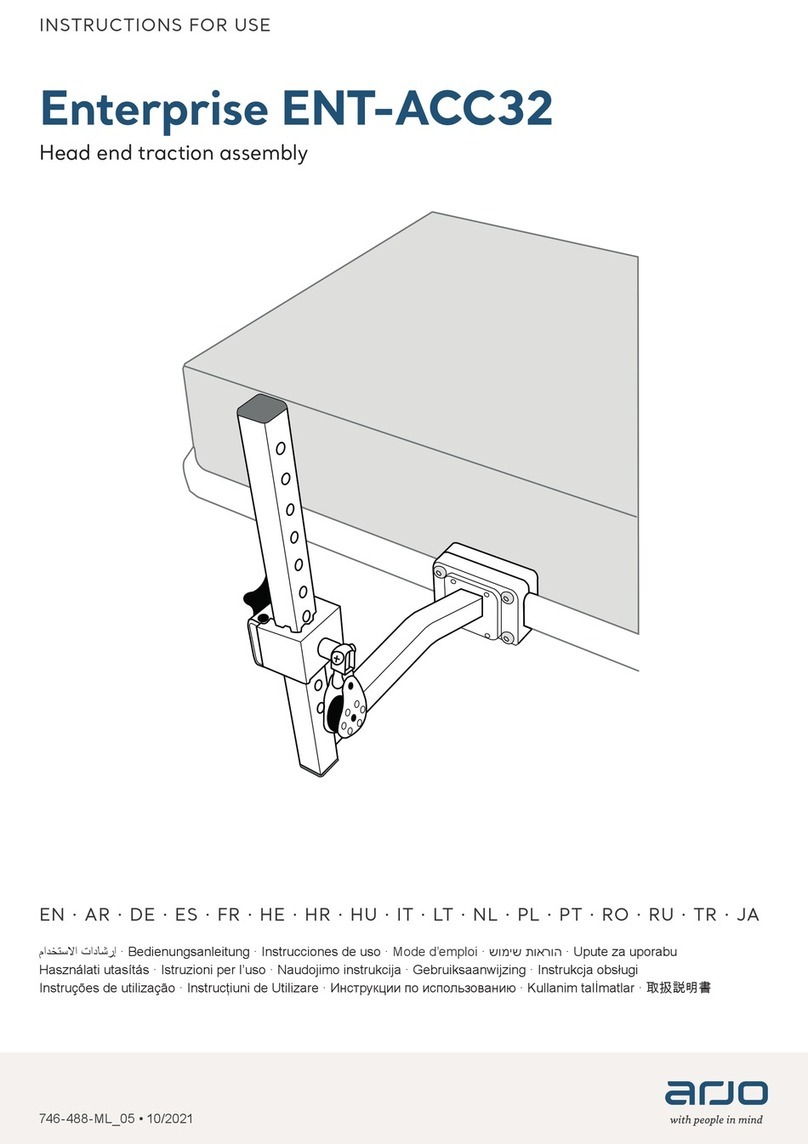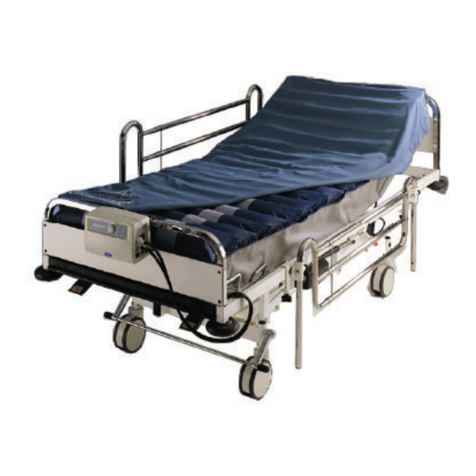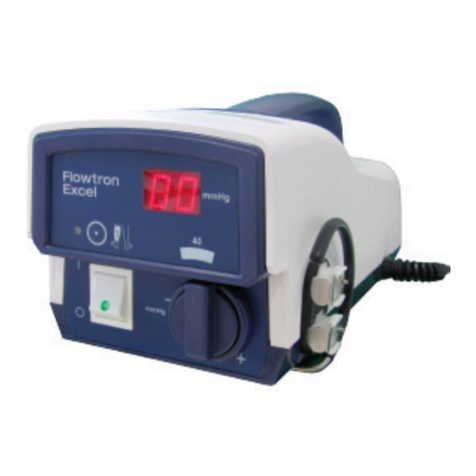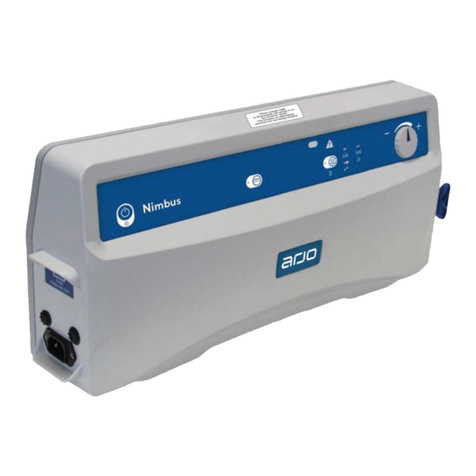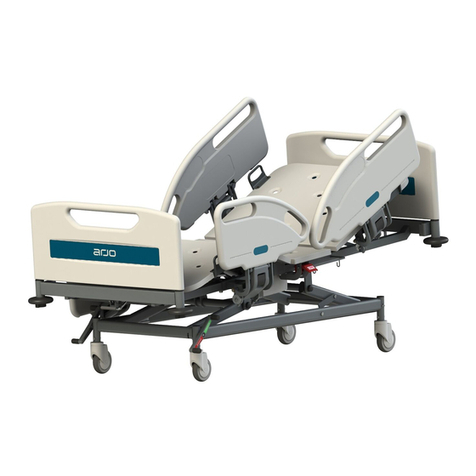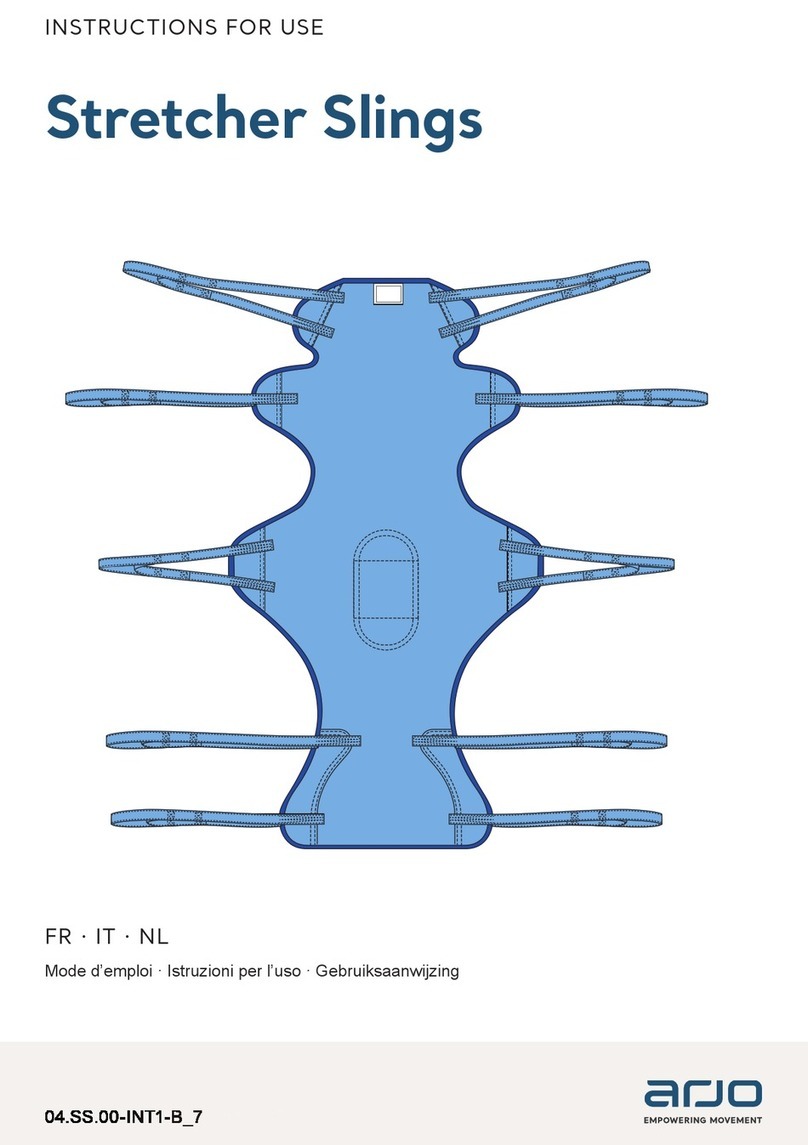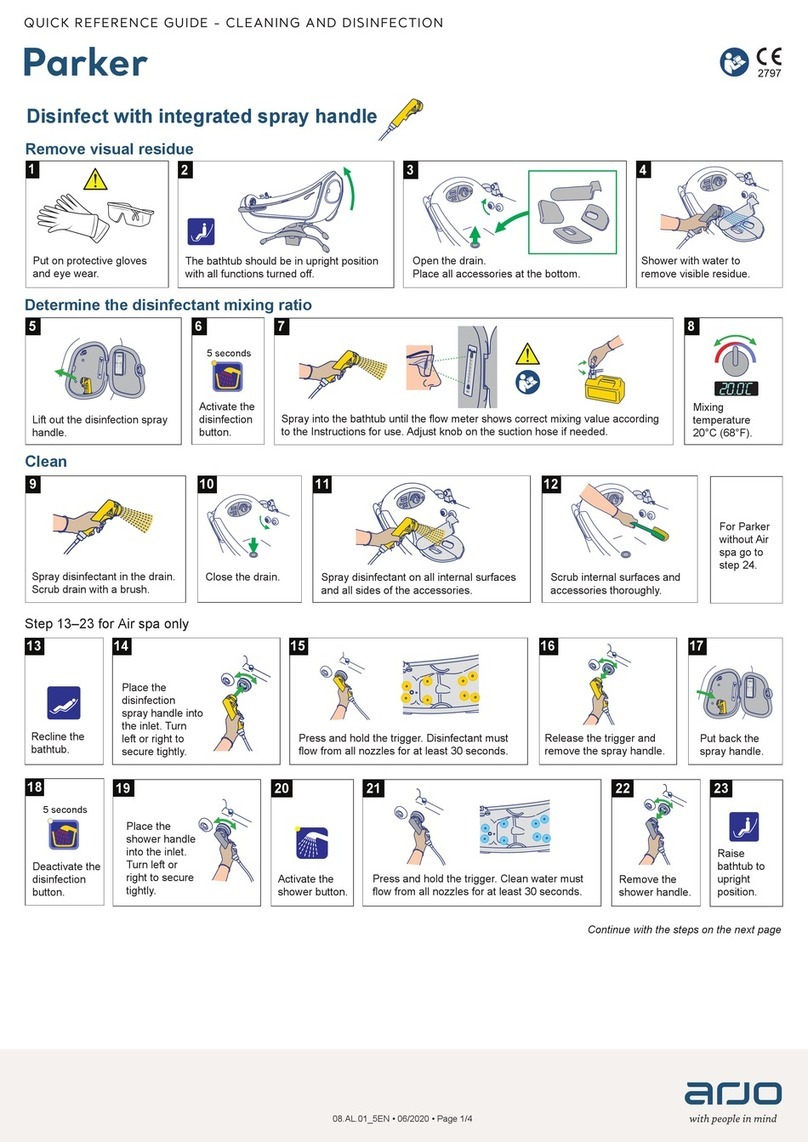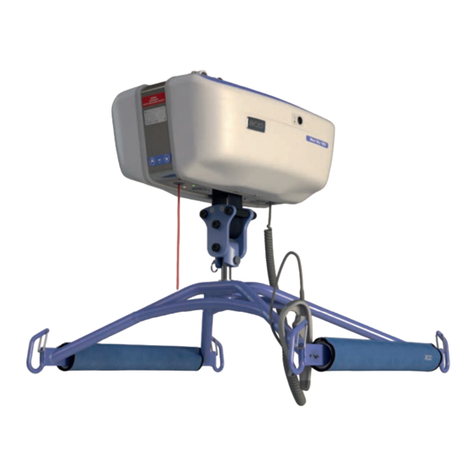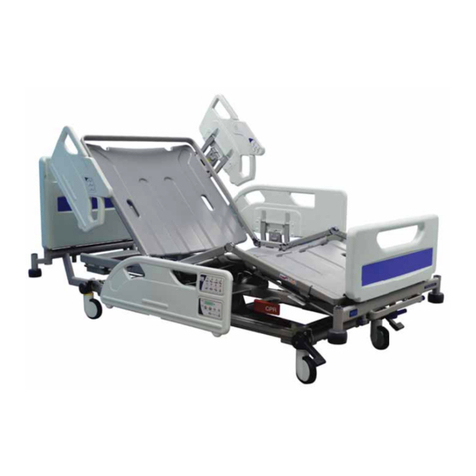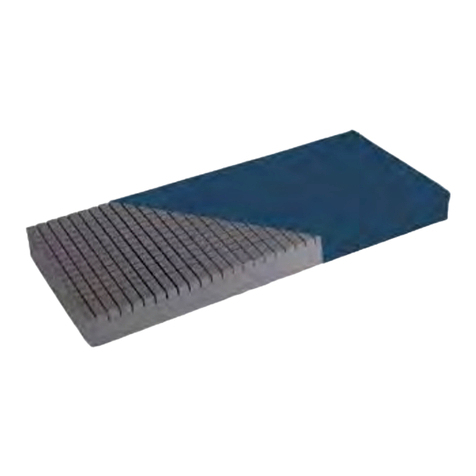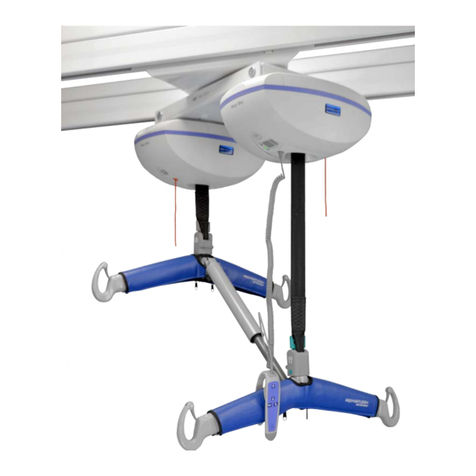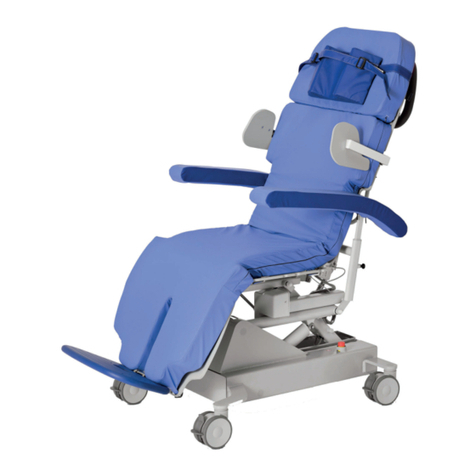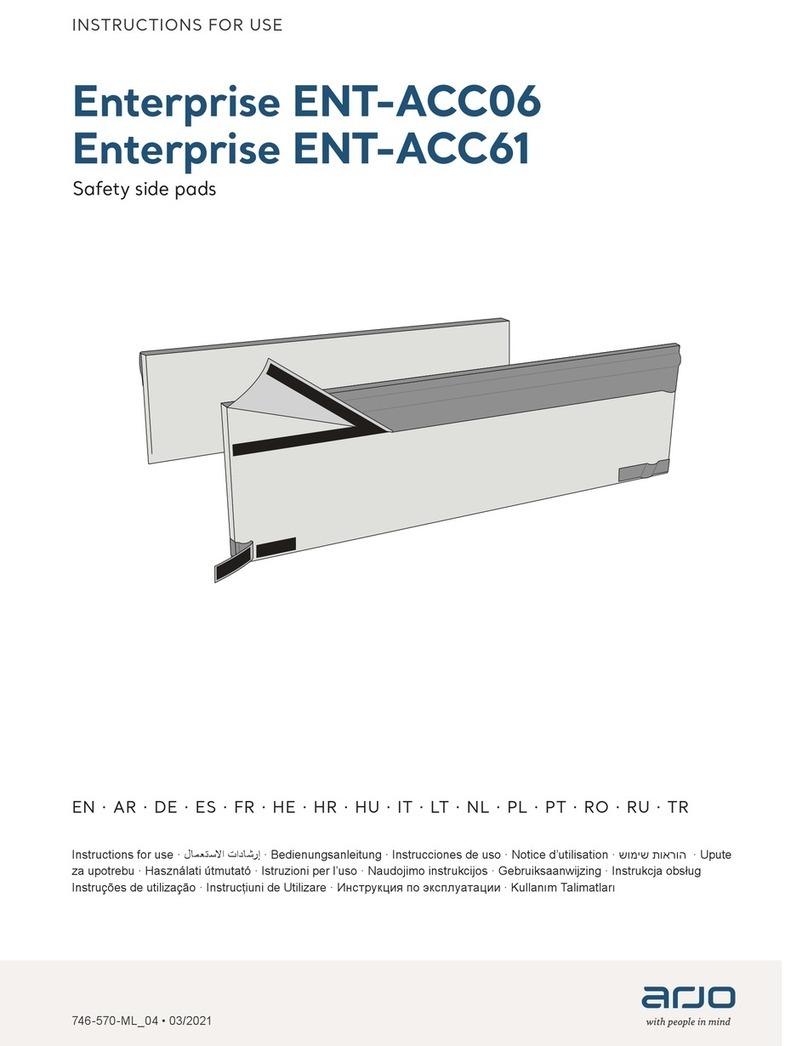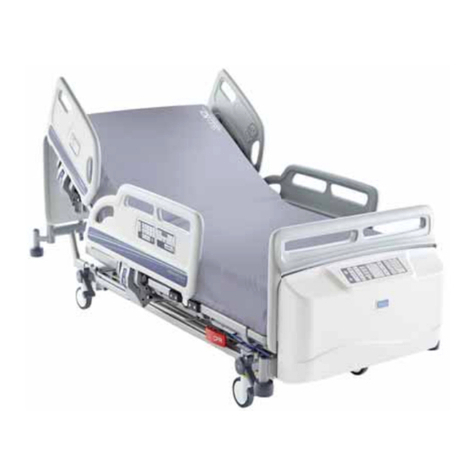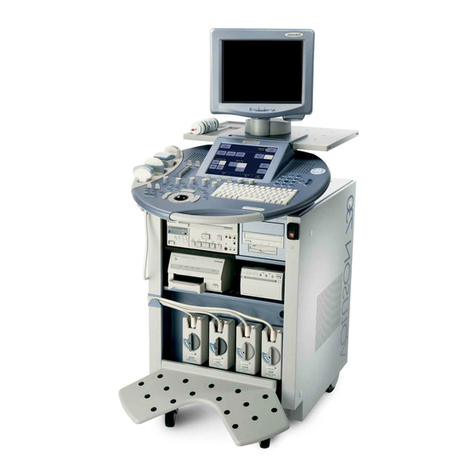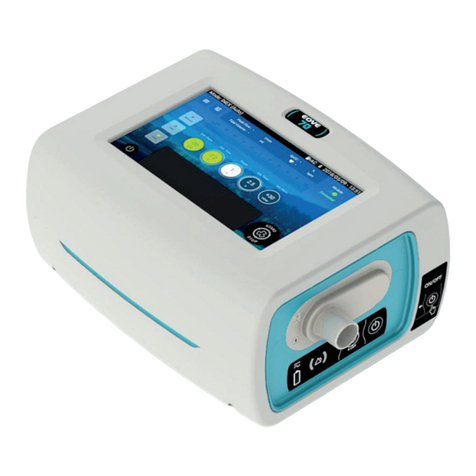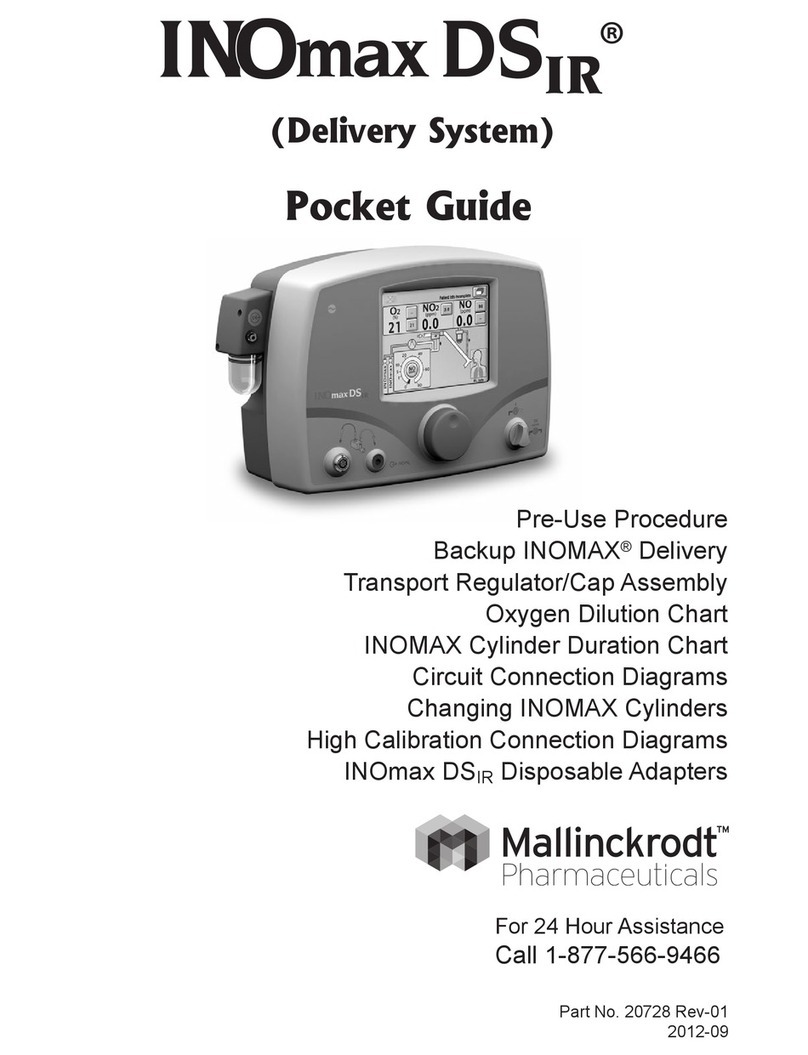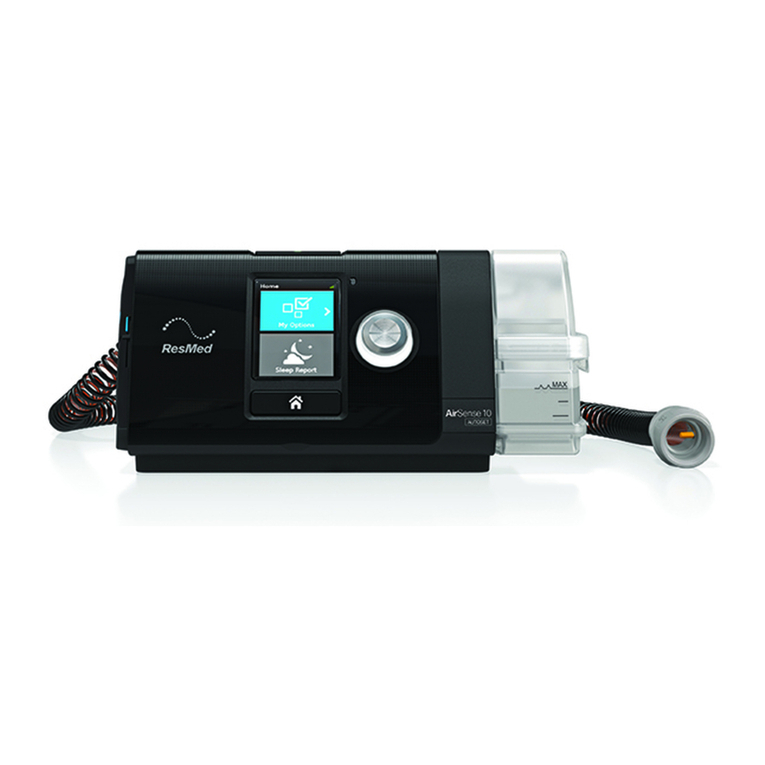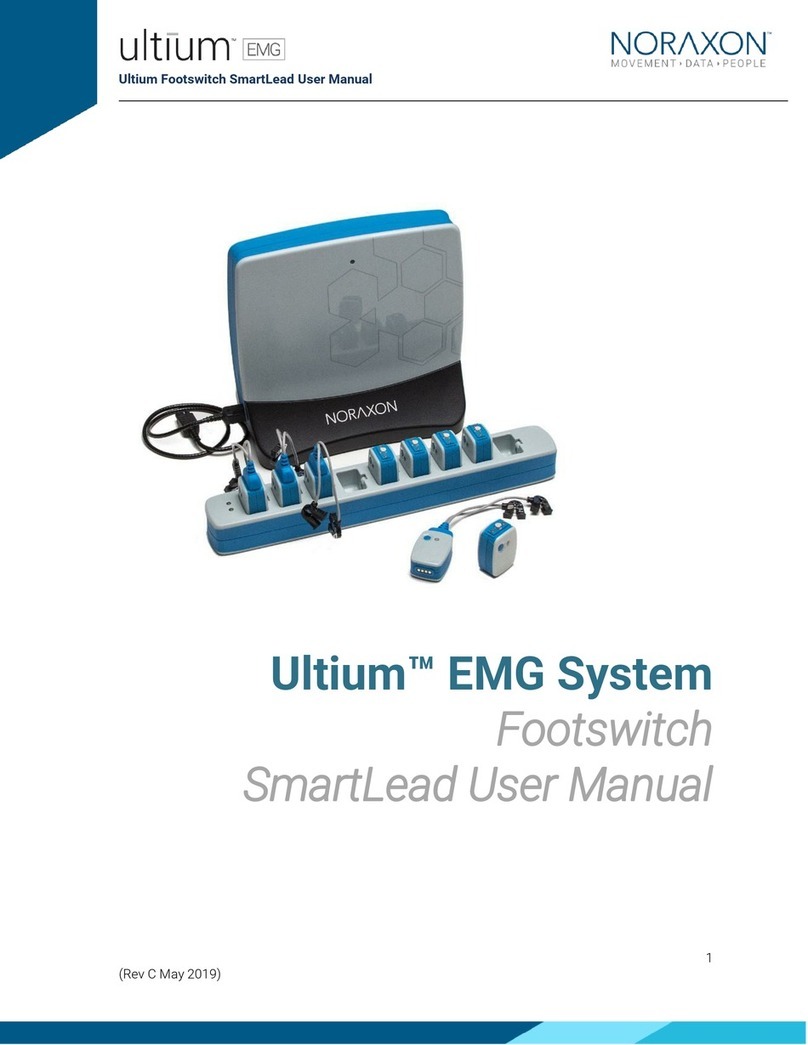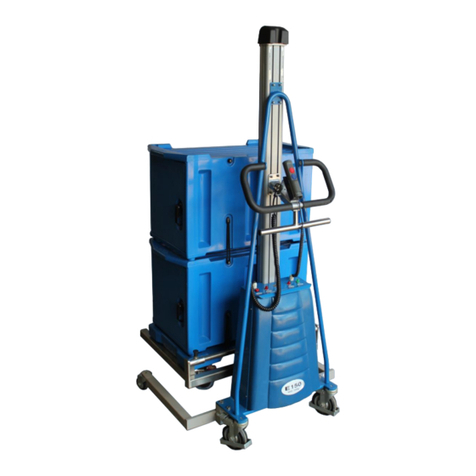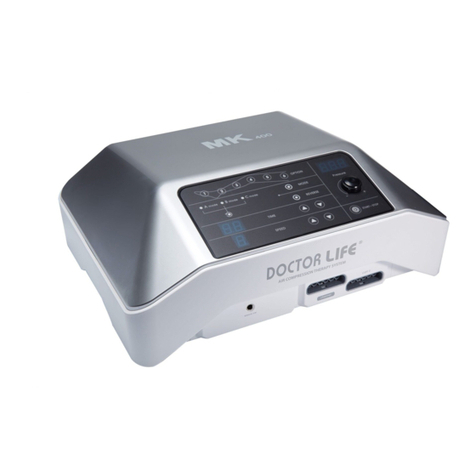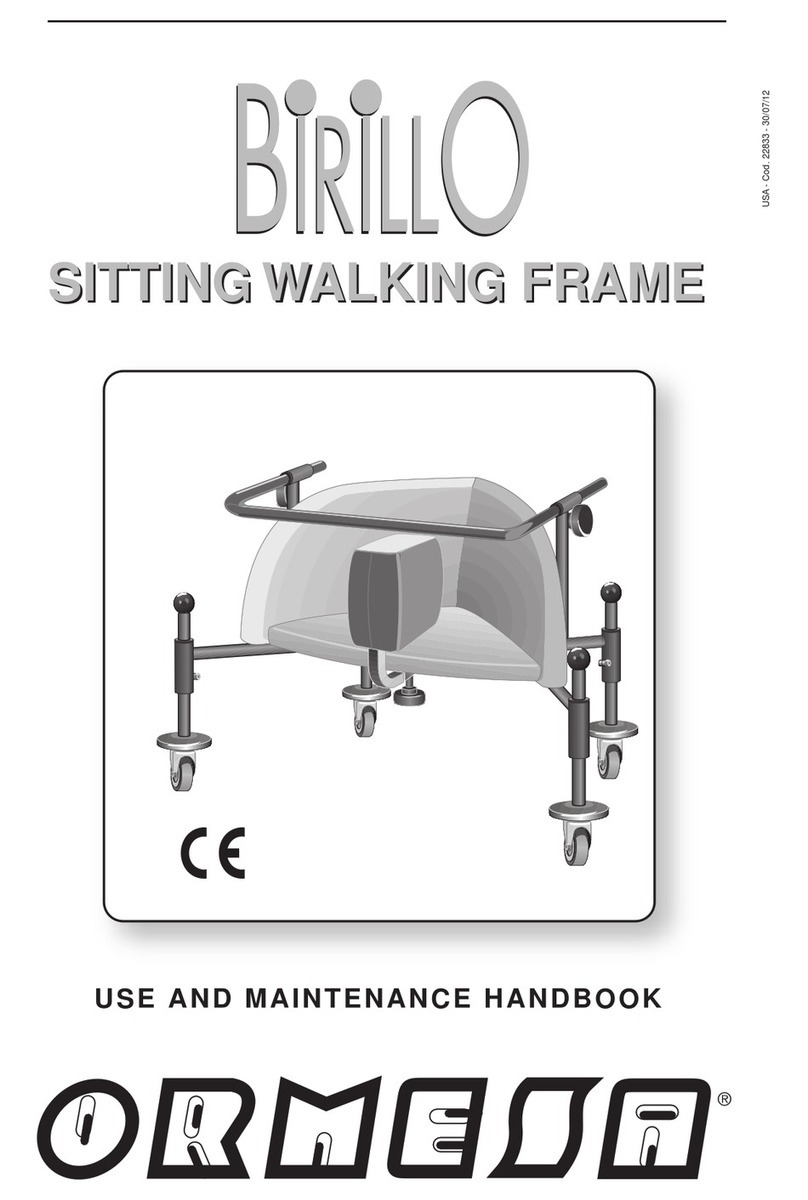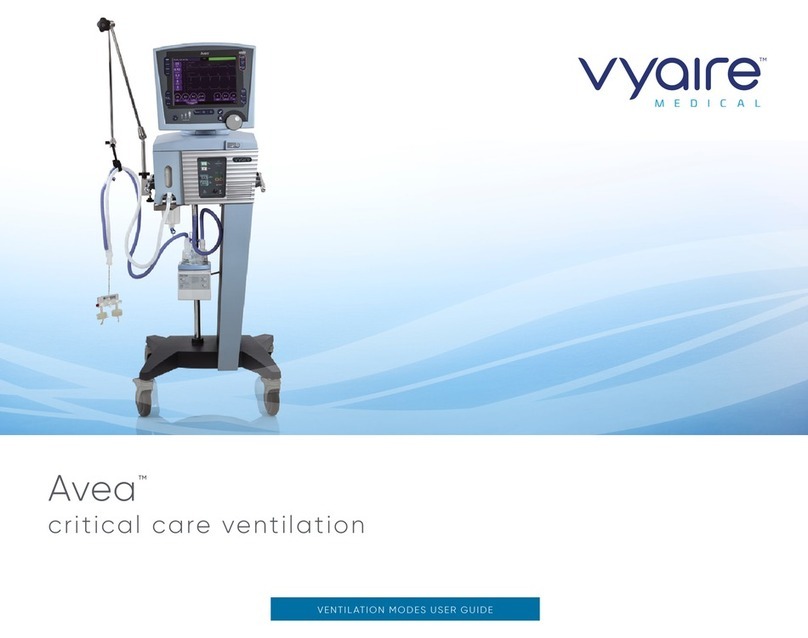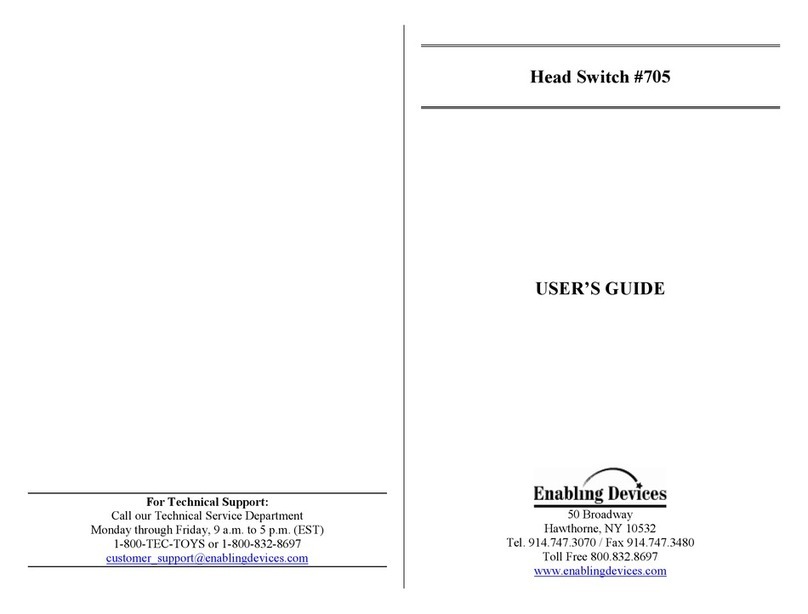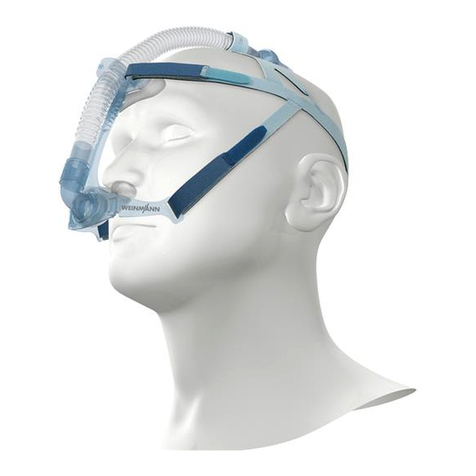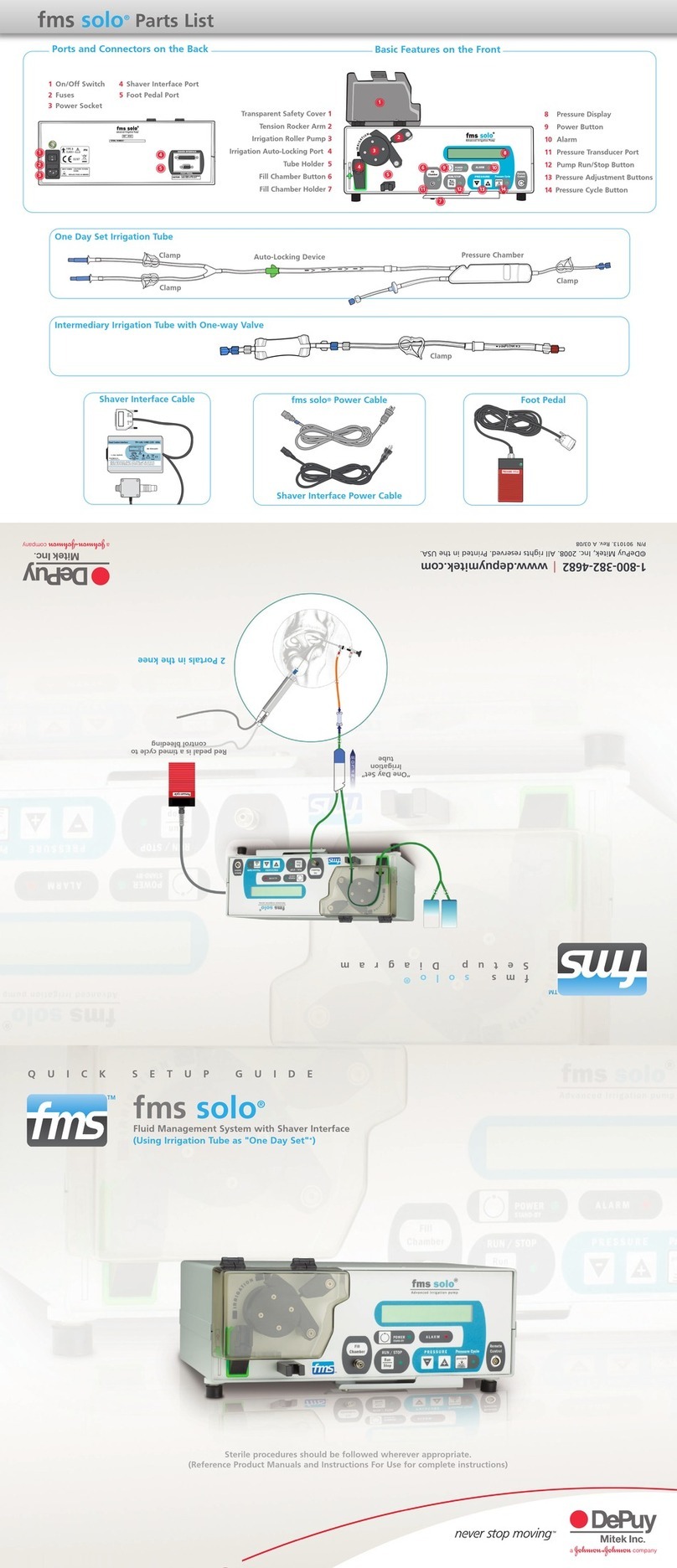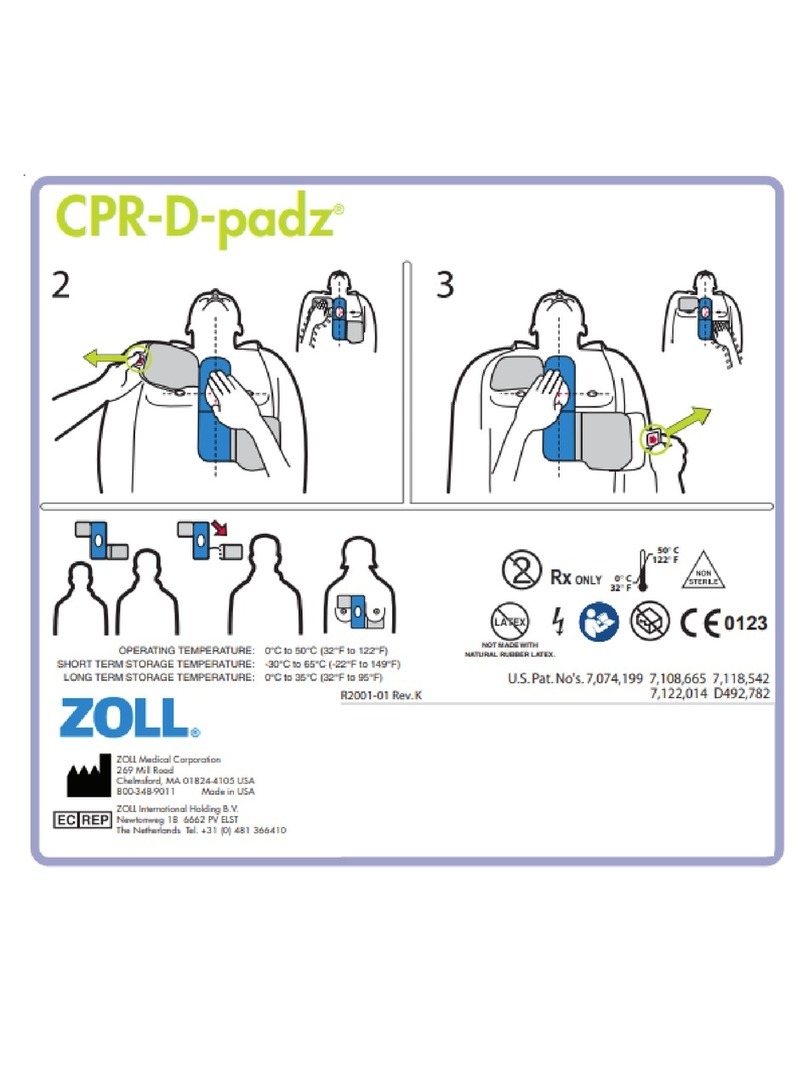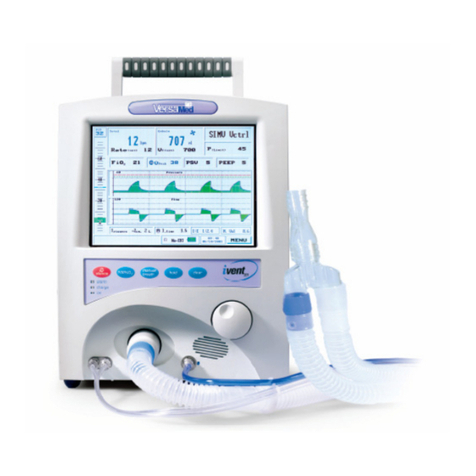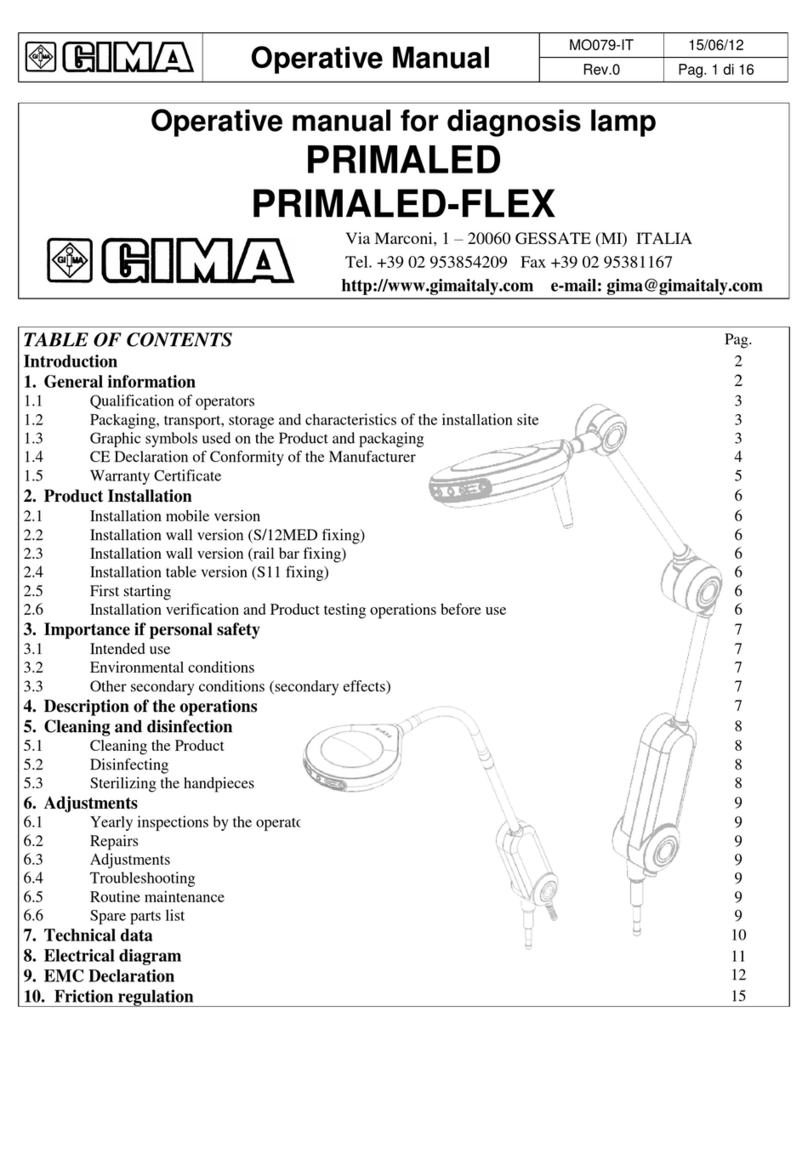
4
Intended use
This equipment is intended for transfer of
resident from bed, chair or wheelchair
directly to ambulation training without
heavy lifting, under supervision of skilled
personnel in accordance with the
instructions in this manual.
All other use must be avoided
.
The life cycle of the product is estimated
to at least 10 years provided that care and
maintenance instructions are followed.
To ensure problem-free and safe
operation, regular service by a trained
technician is recommended. Contact your
localArjo service representative to sign
for a service agreement.
a
ety instructions
The equipment must be
used in accordance with
these safety instructions.
Anyone using the
equipment must also have
read and understood the
instructions in this booklet.
If there is anything you are
not sure about, ask your
Arjo representative.
NOTE
Modifications made to the
equipment without Arjo’s
express acknowledgement
will invalidate supplier’s
product liability.
NOTE
Always make sure that:
❏
the equipment is handled by trained
staff.
❏
the Walker is moved with care,
especially in narrow passages, over
bumps, etc. and that the resident
safety straps are secure.
❏
theWalkeris is moved in the correct
direction.
❏
the wheels and brakes work freely.
❏
the wheels are locked on theWalker
during resident transfer from/to bed/
wheelchairetc. andwhentheWalker
is stationary.
❏
bed/wheelchair wheels are locked
during resident transfer from/to
bed/wheelchair.
❏
the safety straps are in good
condition and properly fastened.
❏
all screws are tightened.
❏
the hydraulic system is working
smoothly (raising and lowering).
❏
there are no sharp edges on parts
coming in contact with residents.
Warning!
Do not overload! The
lifting capacity of the
Walker is 330 lb. (150 kg).
General practices for
batteries:
❏
Only use the charger unit supplied
with the equipment.
❏
Do not charge batteries in a sealed
container.
❏
Do not place batteries near a heat
source or fire.
❏
Do not place batteries in a fire.
❏
Do not short circuit a battery.
❏
Do not store batteries at
temperatures higher than 60°C
(140°F).
❏
Do not crush, puncture, open,
dismantle or otherwise
mechanically interfere with
batteries.
❏
Should the battery casing become
cracked and electrolyte come into
contact with skin or clothing, wash
immediatly with water. If the
electrolyte comes into contact with
the eyes, wash with copious
amounts of water and seek medical
attention immediately.
❏
Contact the appropriate local
authority for advice when disposing
of the battery.
Reference Copy
Printed
Check occasionally
for new editions.














